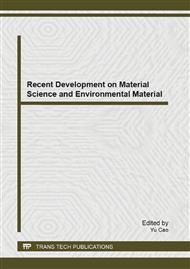p.576
p.580
p.584
p.593
p.597
p.601
p.606
p.610
p.614
Experimental Research on Adsorption Treatment of Military Agent Contaminated Water Using Activated Carbon
Abstract:
Adsorption treatment test was carried out using powder activated carbon (PAC for short) and coconut shell activated carbon (SAC for short) taking water contaminated by military agent as the object of study in order to study on the influences of type, dosage, adsorption time, pH value and initial solution concentration of adsorbent on adsorption effect and to discuss about adsorption mechanisms of activated carbon.
Info:
Periodical:
Pages:
614-619
Citation:
Online since:
September 2013
Authors:
Price:
Сopyright:
© 2013 Trans Tech Publications Ltd. All Rights Reserved
Share:
Citation:


